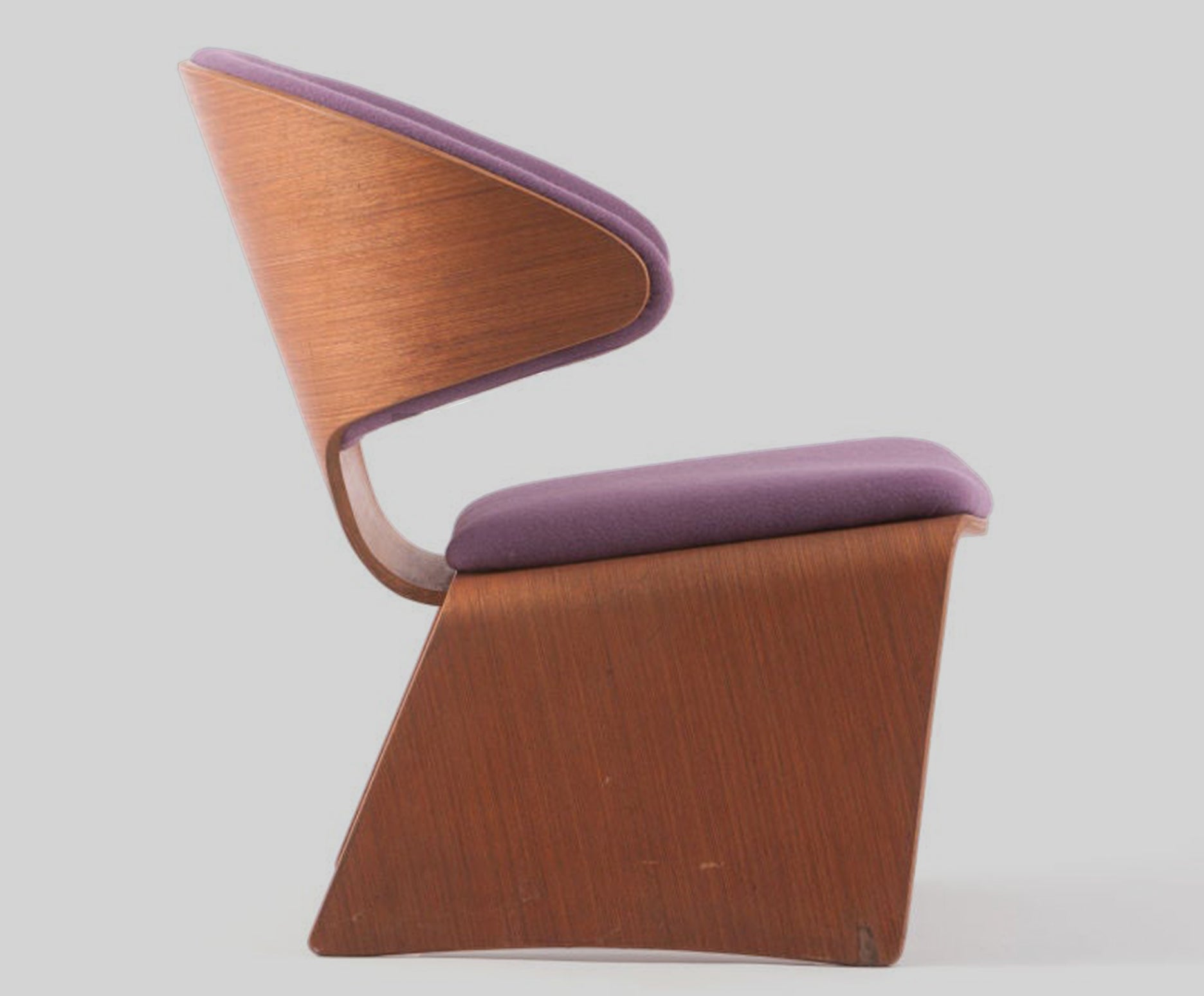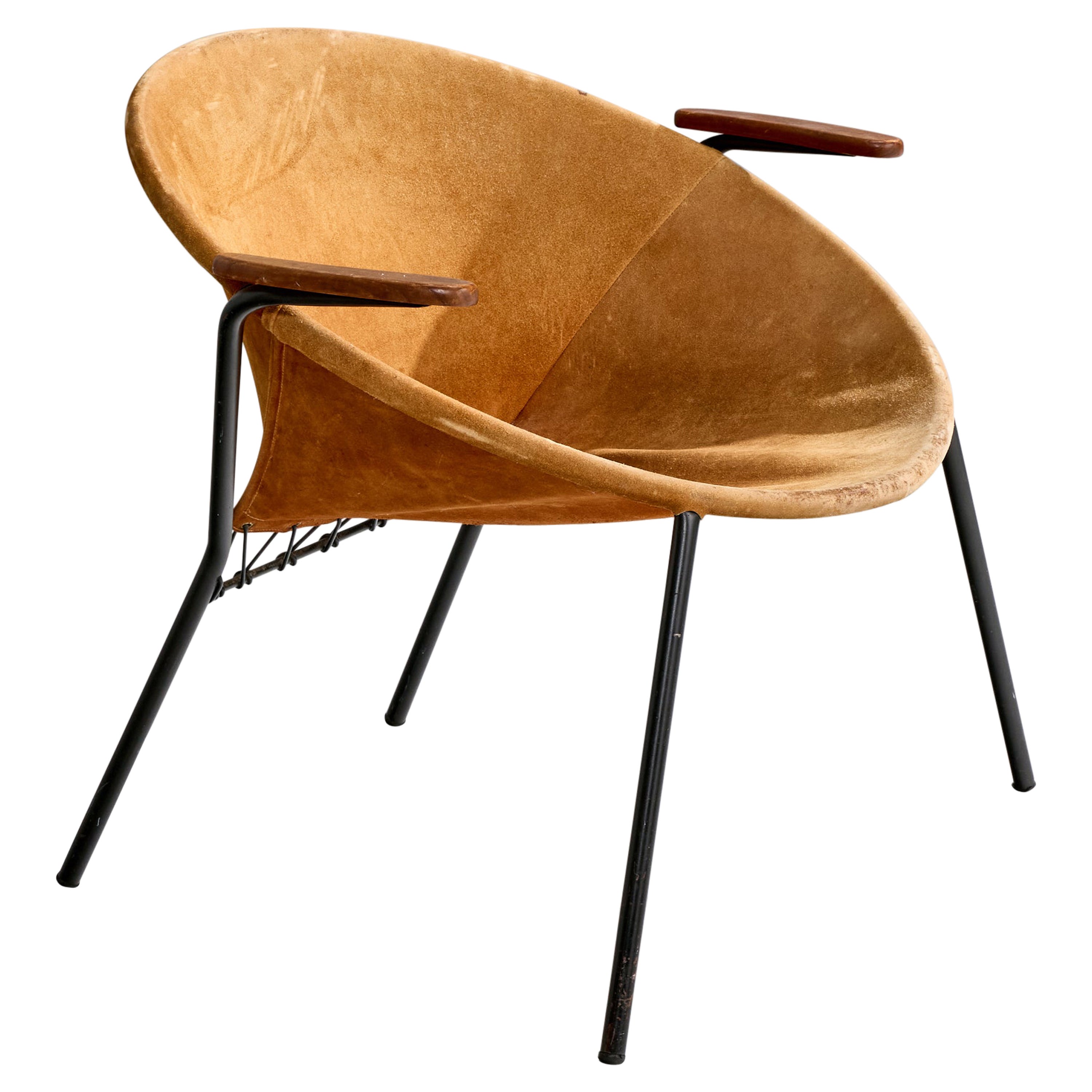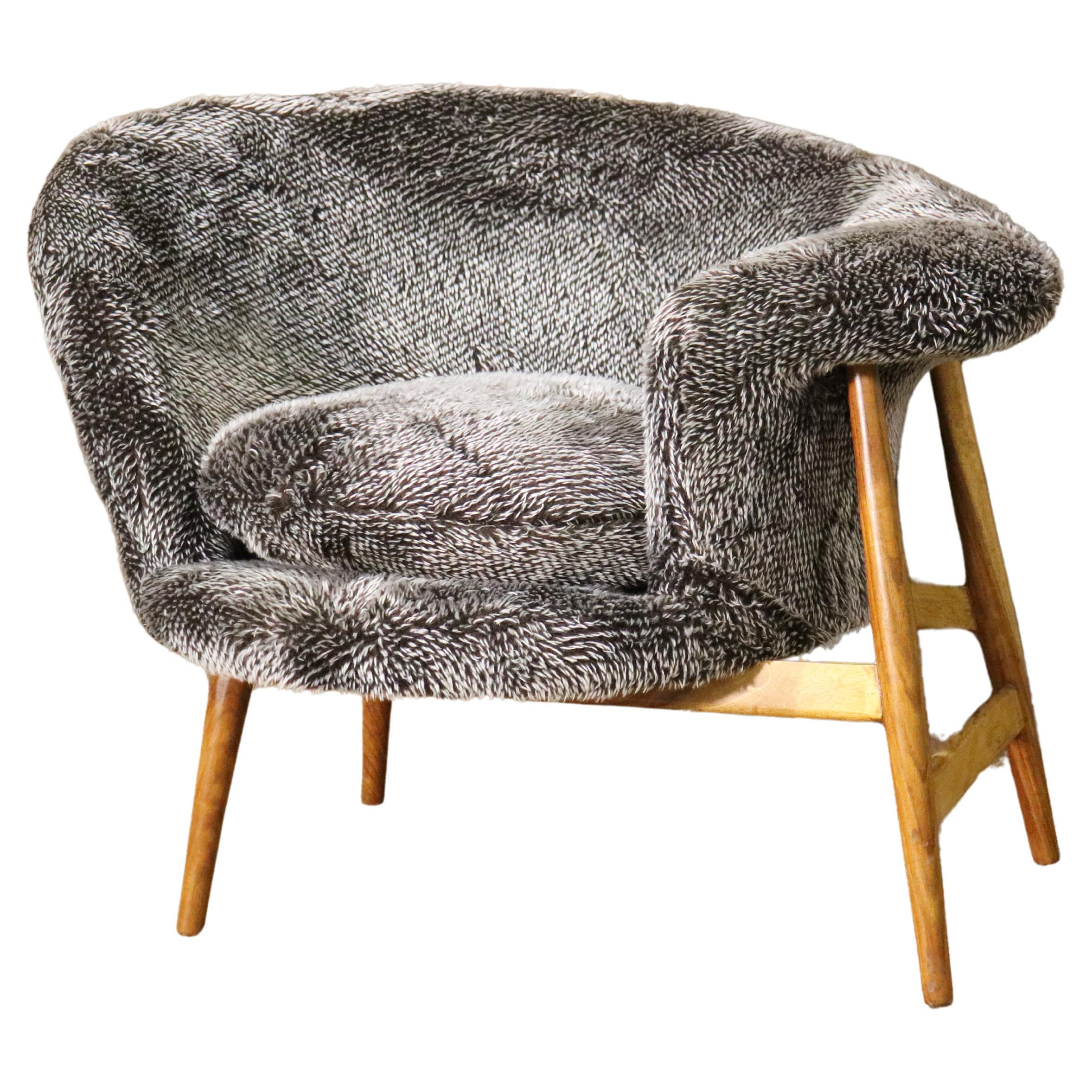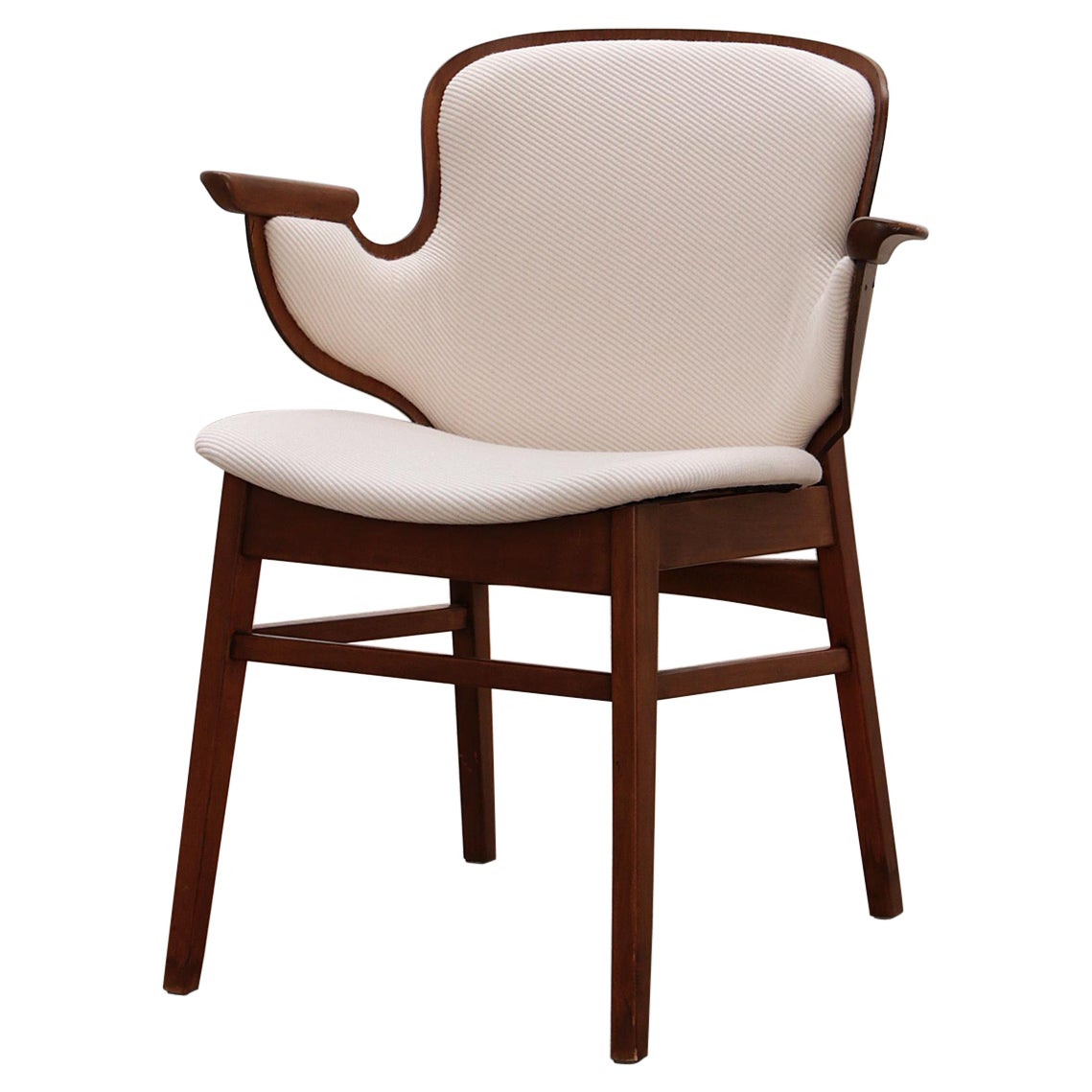
Bikini ChairBy Hans Olsen
Crafted to flaunt its curves just like its itsy-bitsy namesake, the Bikini chair is a singular example of the Danish mid-century modern style, set apart with its distinctive design and innovative use of materials. Hans Olsen (1919–92) first designed the chair in 1960 for Frem Røjle, a prolific furniture-making company with which Olsen collaborated for many of his now-celebrated pieces. Lauded immediately for its futuristic silhouette — all wide contours and sloping lines — the Bikini chair also exemplifies Olsen’s revolutionary application of humble materials to serious design.
The cabinetmaker and furniture designer bent and re-formed laminated wood to create the sculptural look of the chair, thereby rendering something refined and noteworthy from an otherwise common material. Slight and pliable, the wood allowed Olsen to experiment with the Bikini chair’s shape without forgoing stability or longevity. The choice to upholster the cushions in wool shows how Olsen prioritized durability and comfort as well as aesthetics.
Olsen got his start in furniture making in 1941 when he enrolled in the Royal Danish Academy of Fine Arts to study under Kaare Klint, a famous furniture designer widely accepted to be the father of modern Danish design. It wasn’t until 1953, 10 years after graduating, that Olsen opened his own studio and began truly pushing the boundaries of what modern could mean. That boldness is here, in one of the best-known examples of Olsen’s ingenuity. Playful, smart and comfortable, the Bikini chair is edgy without edges.


